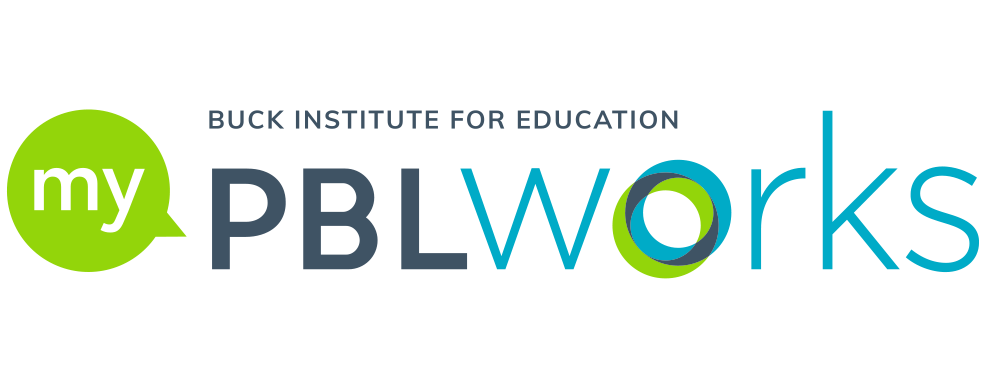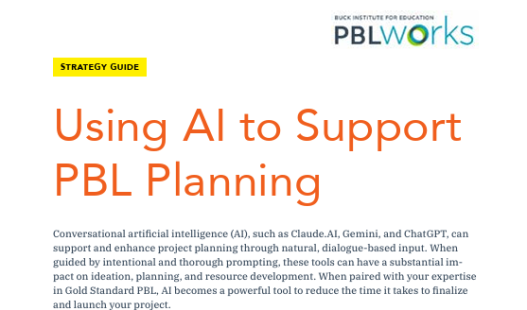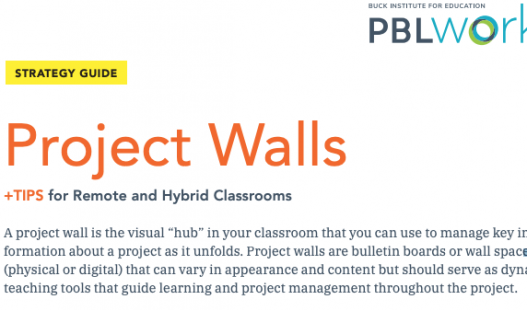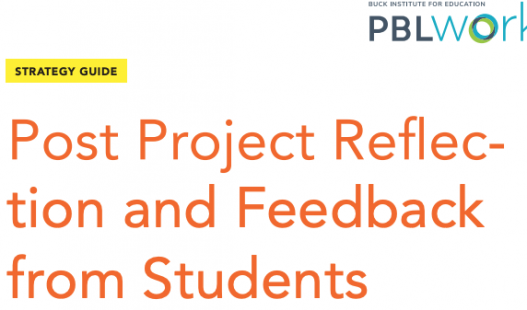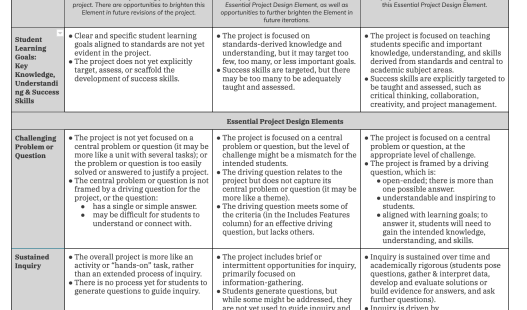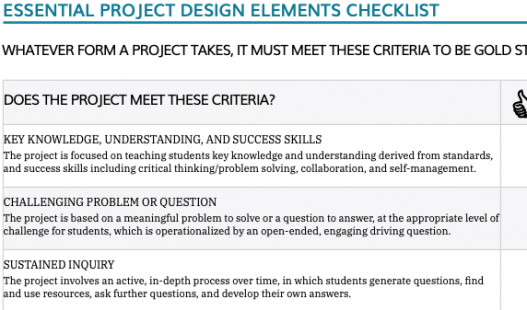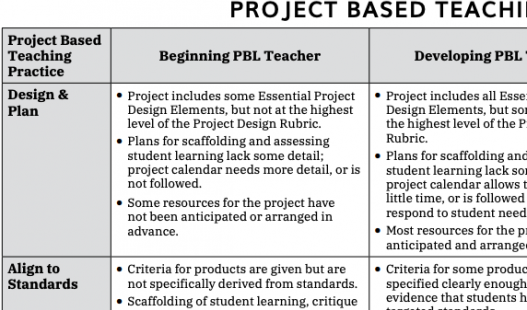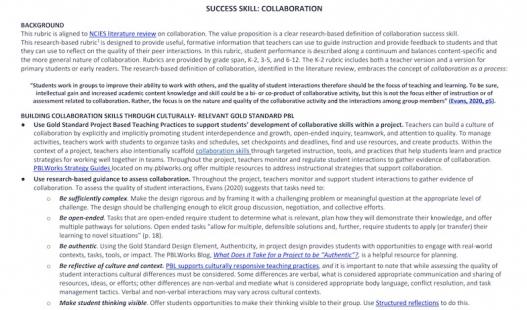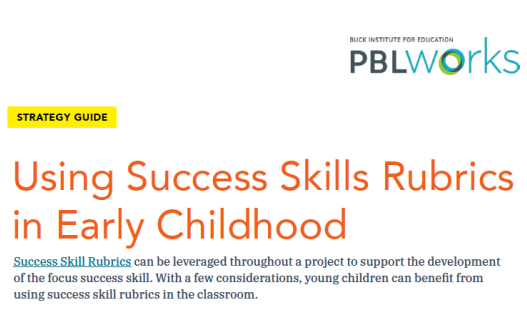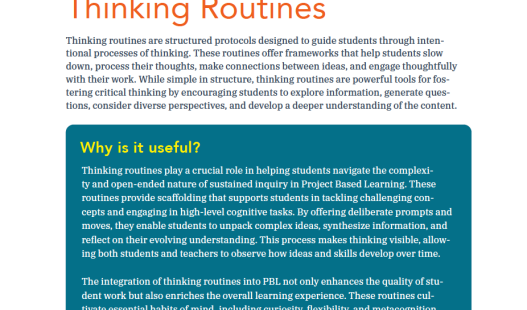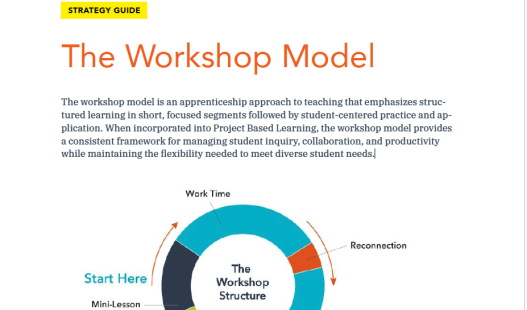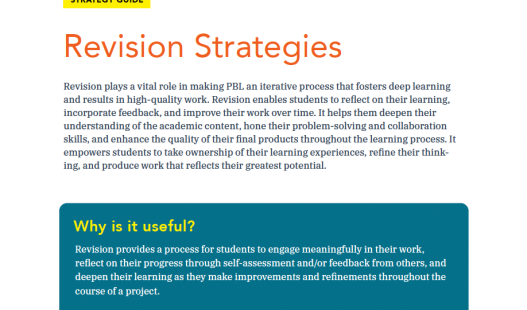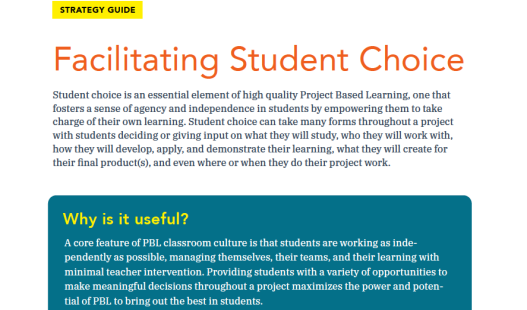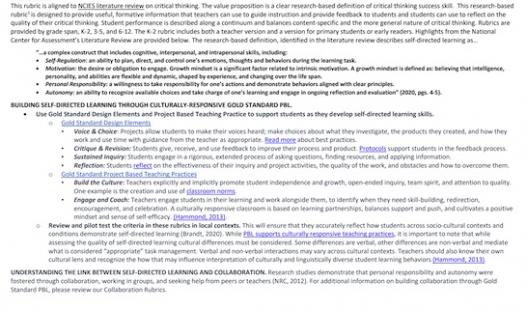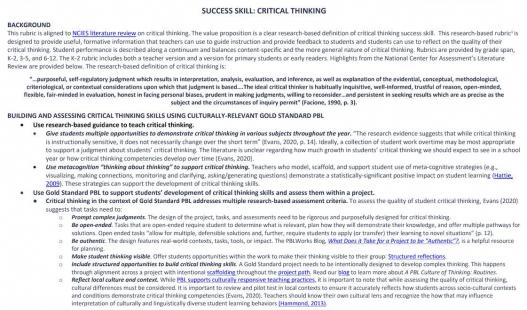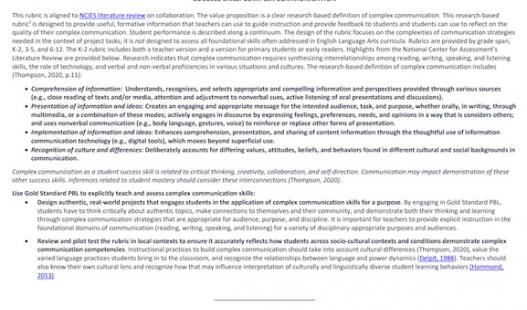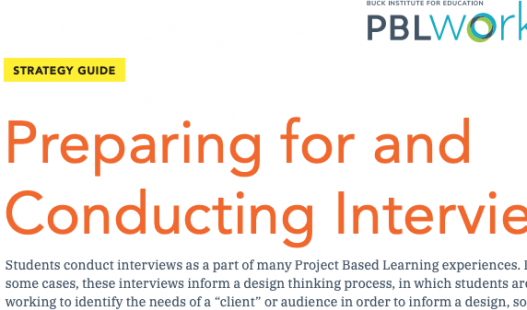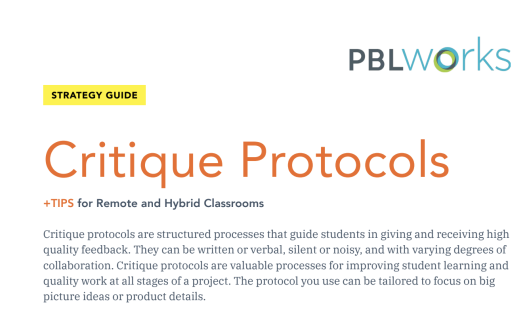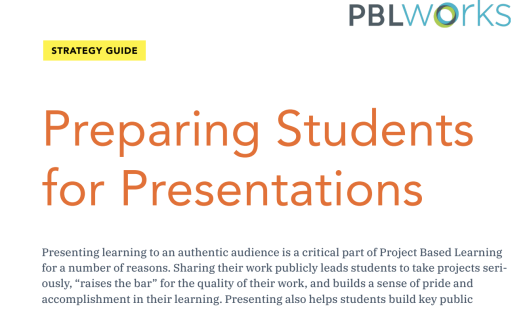41 Results
Conversational artificial intelligence (AI), such as Claude.AI, Gemini, and ChatGPT, can support and enhance project planning through natural, dialogue-based input.
Use this tool to plan for thoughtful collaboration with industry and community partners.
How to use project walls to manage and display student learning in the classroom.
Just as you encourage students to accept critique and revise their work, you should use critique processes to inform your revision of projects. This strategy guide offers guidance on how to request and use student feedback to refine your projects.
Plan projects with Gold Standard PBL's Essential Project Design Elements.
For quick evaluation of a project's design, to check for Gold Standard PBL's Essential Elements.
This rubric describes beginning, developing, and Gold Standard levels for Project Based Teaching Practices.
Success Skill Rubrics can be leveraged throughout a project to support the development of the focus success skill. With a few considerations, young children can benefit from using success skill rubrics in the classroom.
Thinking routines are structured protocols that guide students through intentional thinking processes. These routines offer frameworks that help students slow down, process their thoughts, make connections between ideas, and engage thoughtfully with their work.
The workshop model is an apprenticeship approach to teaching that emphasizes structured learning in short, focused segments followed by student-centered practice and application.
Revision plays a vital role in making PBL an iterative process that fosters deep learning and results in high-quality work. Revision enables students to reflect on their learning, incorporate feedback, and improve their work over time.
Student choice is an essential element of high-quality Project Based Learning, one that fosters a sense of agency and independence in students by empowering them to take charge of their own learning.
Students conduct interviews as a part of many Project Based Learning experiences. In some cases, these interviews inform a design thinking process, in which students are working to identify the needs of a “client” or audience in order to inform a design, solution, or communication strategy.
Critique protocols are structured processes that guide students in giving and receiving high quality feedback. This guide offers strategies for implementing peer critique protocols that enhance learning and improve the quality of student work.
Effective preparation for presentations helps students build project management, collaboration, and communication skills and ensures that their presentations are high-quality and impactful.
